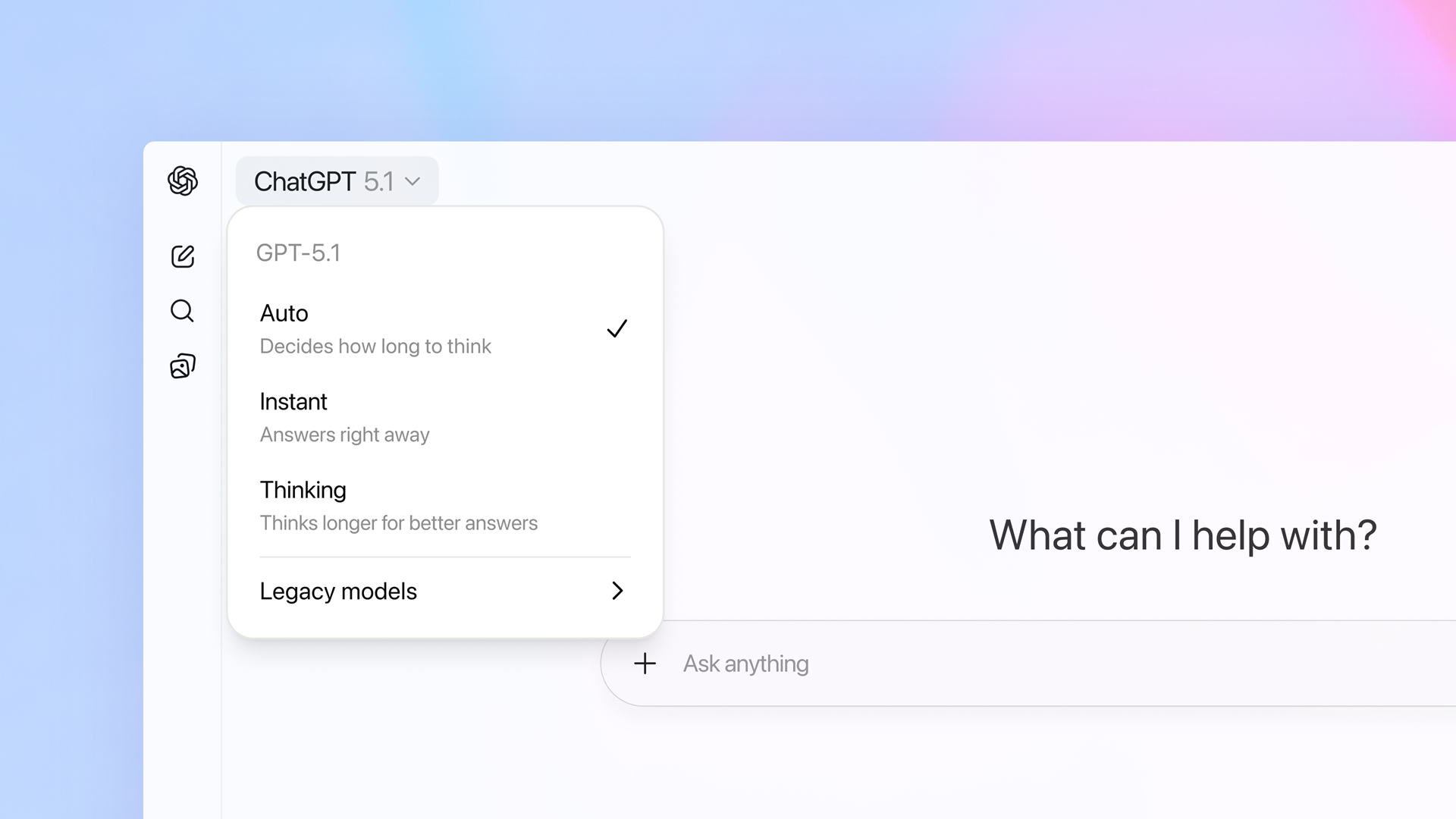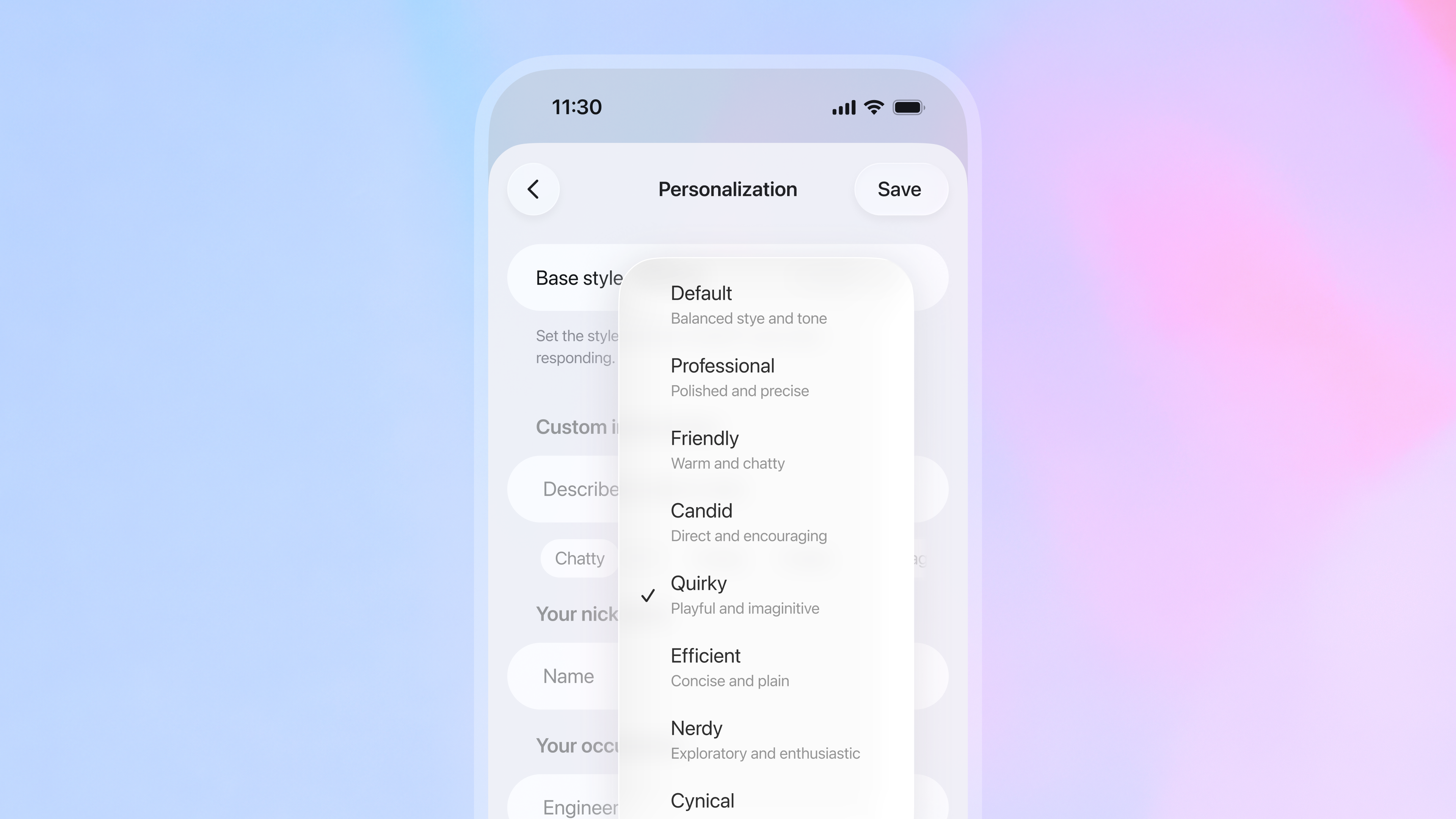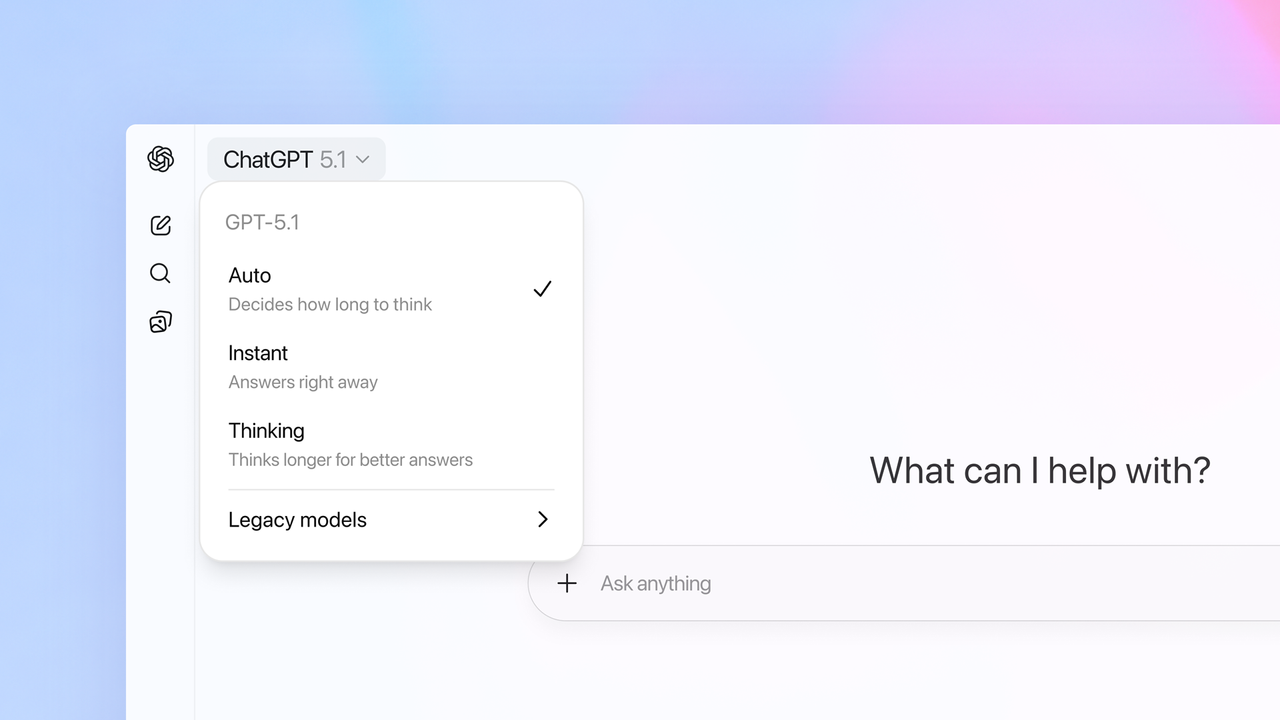Key Points
- OpenAI introduced GPT‑5.1 as the default engine for ChatGPT.
- Two variants are available: Instant for fast answers and Thinking for complex tasks.
- ChatGPT now uses adaptive reasoning to select the appropriate variant per query.
- Real‑time personality and tone controls let users change style mid‑conversation.
- A range of tones—including friendly, efficient, cynical, nerdy, candid, and quirky—are supported.
- Older models remain accessible for at least three months for comparison.
- Paid users receive the new models first, with free users following later.
- The rollout aims to address criticism of the previous GPT‑5 release.


GPT-5.1 in ChatGPT
New Model Variants
OpenAI unveiled GPT‑5.1 as the latest generation of its language models and made it the default option for ChatGPT. The model comes in two distinct variants. The “Instant” version is optimized for speed, delivering quick answers for most user queries. The “Thinking” version is designed for more complex tasks, taking extra time to provide thorough, step‑by‑step reasoning. Together, these variants allow the system to adapt its response speed based on the difficulty of the prompt.
Adaptive Reasoning and Model Selection
ChatGPT now applies adaptive reasoning to decide which variant to use. Simple or straightforward questions trigger the Instant model, while ambiguous or challenging prompts prompt the system to switch to the Thinking model, ensuring users receive appropriate depth without unnecessary delay.
Real‑Time Personality and Tone Controls
Beyond the model improvements, OpenAI introduced refined personality controls. Users can select from a range of tones—such as friendly, efficient, cynical, nerdy, candid, or quirky—and adjust these settings in the middle of a conversation. The changes take effect immediately across the ongoing chat, eliminating the need to start a new session for tone adjustments. This flexibility extends to emoji frequency and verbosity, giving users granular control over how the AI communicates.
Response to Prior Feedback
The GPT‑5.1 release follows a contentious rollout of the earlier GPT‑5 model, which drew criticism for feeling robotic and for quickly forgetting prior answers. OpenAI listened to that feedback, retaining older models in the dropdown menu for at least three months to let users compare performance and provide input. Paid subscribers receive the new models first, with free‑tier users gaining access later.
Rollout Strategy and Future Updates
The phased deployment helps manage server load while signaling OpenAI’s commitment to iterative improvement. Rather than waiting for a completely new generation, the company plans continued updates within the GPT‑5.1 family, aiming to smooth the user experience and address earlier concerns about clarity and responsiveness.
Overall Impact
GPT‑5.1 does not reinvent the AI chatbot, but it refines the experience by balancing speed with depth and offering customizable personality settings. This approach seeks to retain users attached to existing models while providing a clearer, more adaptable conversational tool for a broad audience.
Source: techradar.com
